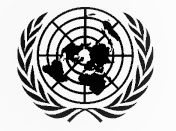Background
The Protocol on Explosive Remnants of War (Protocol V) was negotiated by the CCW Group of Governmental Experts in 2002 and 2003 and adopted by the Meeting of the States Parties to the CCW on 28 November 2003. The Protocol recognizes the serious post-conflict humanitarian problems caused by explosive remnants of war and addresses post-conflict remedial measures of a generic nature in order to minimize the occurrence, effects and the risk of explosive remnants of war.
Key provisions
- Parties which become participants in an armed conflict bear responsibility with respect to all explosive remnants of war in territory under their control.
- After the cessation of active hostilities, and as soon as feasible, such a Party to an armed conflict shall mark and clear, remove or destroy explosive remnants of war in affected territories under its control.
- Parties shall, to the maximum extent possible, record and retain information on the use of explosive remnants of war, and make available such information to the party in control of the affected areas.
- Parties shall take all feasible precautions to protect civilian population from the risks and effects of explosive remnants of war.
- Parties shall cooperate among themselves and with other States and organizations, and shall assist each other in order to fulfill their duty of clearance, removal or destruction of explosive remnants of war.

Universalization
As recognized at the Fifth Review Conference of the Convention on Certain Conventional Weapons, universalization is essential to the success of Protocol V.
High Contracting parties:
“appreciate[d] the fact that since the Fourth Review Conference 15 new High Contracting Parties joined the Protocol which brings the total number to 91 and reiterate[d] the need for further vigorous efforts from High Contracting Parties, United Nations, international and regional organizations, International Committee of the Red Cross and non-governmental organizations to promote universalization of the Protocol.”



Conferences and Meetings of Experts
Information on the Annual Conference of the High Contracting Parties to Amended Protocol II and the sessions of the Group of Experts can be found on the ODA Meetings Place.
Pursuant to Article 10 (1) of the Protocol, “a Conference of High Contracting Parties shall be held as agreed to by a majority, but no less than eighteen High Contracting Parties”.
Furthermore, the First Protocol V Conference (5 November 2007) decided on the establishment of a mechanism for consultation and cooperation, consisting of annual informal Meetings of Experts reporting to the Conferences of the High Contracting Parties.
The meetings of experts focus on discussions at the technical level in the areas of:
- clearance of explosive remnants of war;
- cooperation and assistance;
- generic preventive measures;
- national reporting;
- recording the use and abandonment of explosive ordnance;
- victim assistance.
The discussions at the meetings of experts are facilitated by coordinators who report and propose recommendations to the annual conferences.

